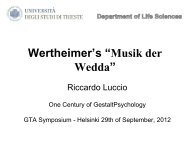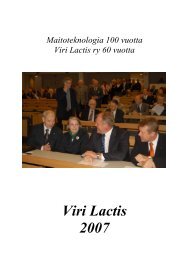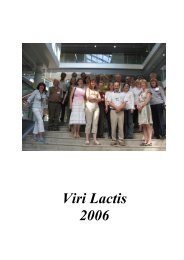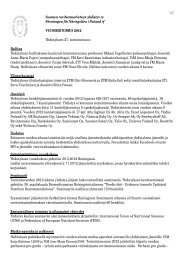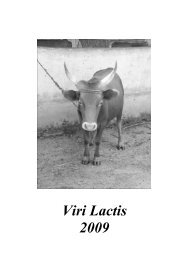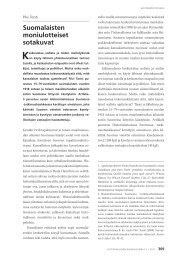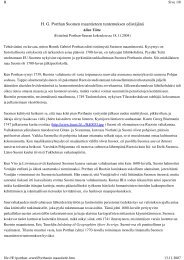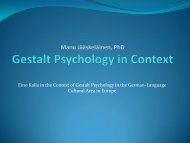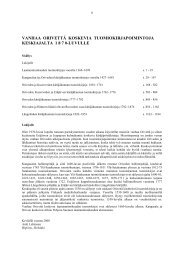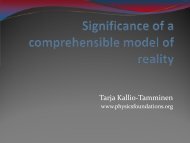Gestalt Theory: History and Modernity
Gestalt Theory: History and Modernity
Gestalt Theory: History and Modernity
You also want an ePaper? Increase the reach of your titles
YUMPU automatically turns print PDFs into web optimized ePapers that Google loves.
are inconsistent or imbalanced. To know that smoking is very bad for your health, <strong>and</strong> thatyou are a smoker will create ‘dissonance’, which the person will try to avoid or to counteractby means of cognition. Very complex processes may take place <strong>and</strong> they may beunlogical or even false, but the person wants to be consistent.In this case:The person may remind that(A) his gr<strong>and</strong>father was heavily smoking but lived a very old age.(B) Or the person may doubt that the hypothesis is true <strong>and</strong> that the connectionof smoking <strong>and</strong> cancer is scientifically not convincingly proved.(C) The best solution would simply be to stop smoking (which is rather seldom)This example shows that dissonance is experienced as unpleasantness <strong>and</strong> theindividual sets energies free to interrupt or moderate this emotionalstate, in reorganizing cognitions (that can be also the perception ofone’s own behaviour).Recent developmentsContrariness as phenomenal qualitySince the early beginnings of perceptual psychology the experience of identity, similarity,connectivity, causality has been in the focus of discussion.But contrariness or oppositeness has been neglected. Savardi & Bianchi (2006) <strong>and</strong>Bianchi & Savardi (2008) did research on this topic. They defined contrariness as themaximum variation within a dimension (maximum difference) while diversity should be thesum of differences (i.e. the sum of contraries in many dimensions).• We may experience contrariness or diversity perceiving these two figures.• It is an immediate experience!They investigated in experiments the contrariness or oppositeness between geometricfigures asking experimental subjects to create or to assess figures which wereopposite to presented ones.Results showed that axis transformations often generated obvious oppositeness in figures with asalient axis orientation. The results indicate that subjects agreed with another in their judgment at a6



